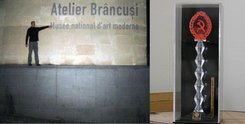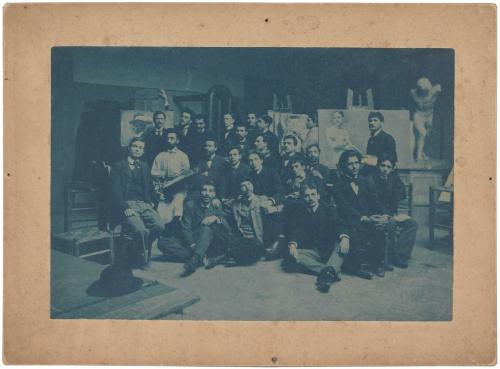Exhibition
Histoire de l'Atelier Brancusi
�5 Nov 2015 - 30 Sep 2017
�5 Nov 2015 - 30 Sep 2017

The event is over

Constantin Brancusi and his studio
Born in Romania in 1876, Constantin Brancusi lived and worked in Paris from 1904 until his death in 1957, and this is where he produced most of his work. In his will, he bequeathed his entire studio to the French state. An exact reconstruction of this was made in 1997 on the piazza opposite the Centre Pompidou to house his collection, consisting of 137 sculptures, 87 bases, 41 drawings, two paintings and over 1 600 glass photographic plates and original prints.
From 1916 until his death, Brancusi worked in various studios, at first 8, then 11 Impasse Ronsin in Paris's 15th arrondissement. He used two and then three studios, knocking down the walls to create the first two rooms in which he exhibited his work. In 1936 and 1941, he added two other adjoining areas, which he used for works in progress, and to house his workbench and tools.
The Atelier Brancusi: a work of art in its own right
Brancusi considered the relationship between sculptures and the space they occupied to be of crucial importance. In the 1910s, by laying sculptures out in a close spatial relationship, he created new works within the studio which he called "mobile groups", stressing the importance of the connections between the works themselves and the possibilities of each for moving around within the group.
In the Twenties the studio became an exhibition space for his work, and a work of art in its own right: a body consisting of cells that all generated each other. This experience of looking from within the studio at each of the sculptures, thus perceiving a group of spatial relationships, led Brancusi to revise their positions every day to achieve the unity he felt most apposite.
At the end of his life, Brancusi stopped creating sculptures and focused solely on their relationship within the studio. This proximity became so fundamental that the artist no longer wanted to exhibit, and when he sold a work, he replaced it with plaster copy so as not to destroy the unity of the group.
The reconstruction of the Atelier Brancusi by Renzo Piano
In 1956, Brancusi bequeathed his entire studio (completed works, sketches, furniture, tools, library, record library, photographs, etc.) to the French state, on condition that it undertook to reconstruct the studio just as it was at the artist's death. After an initial partial reconstruction in 1962 within the museum collections at the Palais de Tokyo, its exact replica was produced in 1977, opposite the Centre Pompidou. After being flooded in 1990, it was closed to the public.
The present reconstruction, built by the architect Renzo Piano, is presented as a museum space containing the studio. Piano's problem lay in making the space open to the public while respecting the artist's wishes. While the architect did not attempt to recreate the intimacy of the Impasse Ronsin, he preserved the idea of a protected, interiorised space where visitors are isolated from the street and the piazza, in particular by an enclosed garden, from which part of the studio can be seen through a glass wall.

Where
Galerie de l'Atelier Brancusi
When
�5 Nov 2015 - 30 Sep 2017
2pm - 6pm, every days except tuesdays
